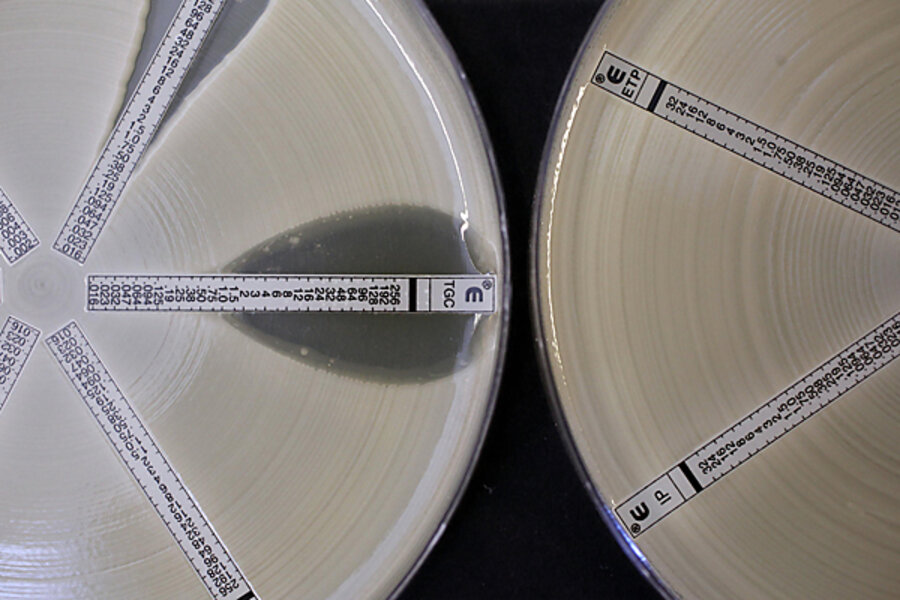Can economics solve antibiotic resistance?
Loading...
Scary theme of the week? Rising antibiotic resistance.
Megan McArdle highlighted this challenge in her presentation at the Kauffman bloggers event on Friday; if you have a moment, check out her chart at the 2:00 mark, showing that resistance to new antibiotics has been developing faster and faster.
You’ll hear more about resistance later in the week, as the World Health Organization will make make it the focus of Thursday’s World Health Day. It’s also the subject of a helpful overview in this week’s Economist.
Antibiotic resistance isn’t new. Indeed, as the Economist notes, Alexander Fleming identified this threat in the 1940s. But it appears to be getting worse. Evolutionary pressure combines with market failure to speed the creation of resistant bacteria:
Convenience and laziness top the list of causes of antibiotic resistance. That is because those who misuse these drugs mostly do not pay the cost. Antibiotics work against bacteria, not viruses, yet patients who press their doctors to prescribe them for viral infections such as colds or influenza are seldom harmed by their self-indulgence. Nor are the doctors who write useless prescriptions in order to rid their surgeries of such hypochondriacs. The hypochondriacs can, though, act as breeding grounds for resistant bacteria that may infect others. Even when the drug has been correctly prescribed, those who fail to finish the course are similarly guilty of promoting resistance. In some parts of the world, even prescription is unnecessary. Many antibiotics are bought over the counter, with neither diagnosis nor proper recommendations for use, multiplying still further the number of human reaction vessels from which resistance can emerge.
In economics lingo, there is an externality. If I take an antibiotic, I get the health or psychological benefits. But I also increase the odds of a new resistant strain of bacteria developing, particularly if I don’t take the drug appropriately. But patients and doctors often don’t take that risk into account when deciding whether and how to use an antibiotic.
That’s a tough problem to crack. The standard economist playbook says we ought to disseminate better information and strengthen incentives so that patients and doctors take these risks into account. Better guidelines for prescribing doctors, perhaps, along with better ways of monitoring and rewarding patients for taking the drugs appropriately. One might even consider a Pigouvian tax to discourage antibiotic use, although that raises a host of concerns of its own.
In addition, we could try to expand the supply of new antibiotics.
That raises the usual questions of how best to encourage innovation through patents, prizes, government-subsidized R&D, changes to the drug approval process, etc. But even intelligent policy can’t overcome nature itself. As the graph from the Economist suggests, the potential pool of antibiotics may be drying up.
Add/view comments on this post.
------------------------------
The Christian Science Monitor has assembled a diverse group of the best economy-related bloggers out there. Our guest bloggers are not employed or directed by the Monitor and the views expressed are the bloggers' own, as is responsibility for the content of their blogs. To contact us about a blogger, click here. To add or view a comment on a guest blog, please go to the blogger's own site by clicking on the link above.





